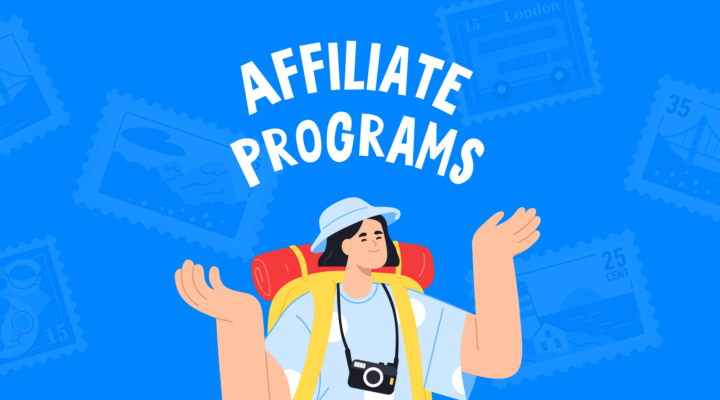What Are Backlinks and Why Are They Important?
Backlinks (also known as “inbound links” and “incoming links”) are links from another website that direct to your website. They are particularly beneficial to SEO since they are pretty much an endorsement of one site by another.
Backlinks to your website are essentially a signal to search engines that people endorse your website. When a large number of websites link to the same webpage or website, search engines might deduce that the information is worth connecting to, and hence worth displaying on the SERP (Search Engine Result Pages). As a result, obtaining backlinks can improve your site’s ranking position or search visibility.
Some backlinks are much more powerful than others. Backlinks from trusted, prominent, relevant sites are the most desired, whilst backlinks from low-authority, potentially spammy sites normally fall on the opposite end of the spectrum.
What Do High-Quality Links Look Like?
Quality, white-hat links have some common traits:
- They come from trusted, authoritative websites. For example, websites such as The New York Times or Business Insider fall into this category.
- The authority of these sites is often very high and any provided SEO tools have their own metrics. For example, SEMrush uses AR (Authority Score), Ahrefs uses DR (Domain Rating), and Moz uses DA (Domain Authority).

- They are relevant to your site. If you operate within the travel industry, for example, you’ll want to receive links from the same industry, not from casino or pharmaceutical websites.
Backlinks vs Mentions
Unlike links, mentions simply refer to your brand or website domain without linking to it. These types of “votes” are considered powerful by Google and Bing because both search engines have figured out how to associate a mention without a link, as a Google rep explained in 2019 during a Reddit AMA.
In the world of SEO, despite the encouraging direction of current trends, backlinks are still more powerful than mentions.
HARO is the Service to Receive Backlinks and Mentions
HARO is one of the best link-building services that connects journalists and other bloggers with people who want to receive backlinks from otherwise impossible sources. For example, with HARO, you can generate backlinks from sites like Business Insider, Forbes, Harvard, The Guardian, The New York Times, Huffington Post, and many more.
What are the chances that you’ll receive links from these sites? Unless you personally know a journalist working in any of those outlets or you work for a very well-known brand, like Apple or BMW, and can easily get these links (in this case, you probably don’t even need them), your chances are pretty low.
I have used HARO many times for myself and my clients to build mentions on highly authoritative websites.
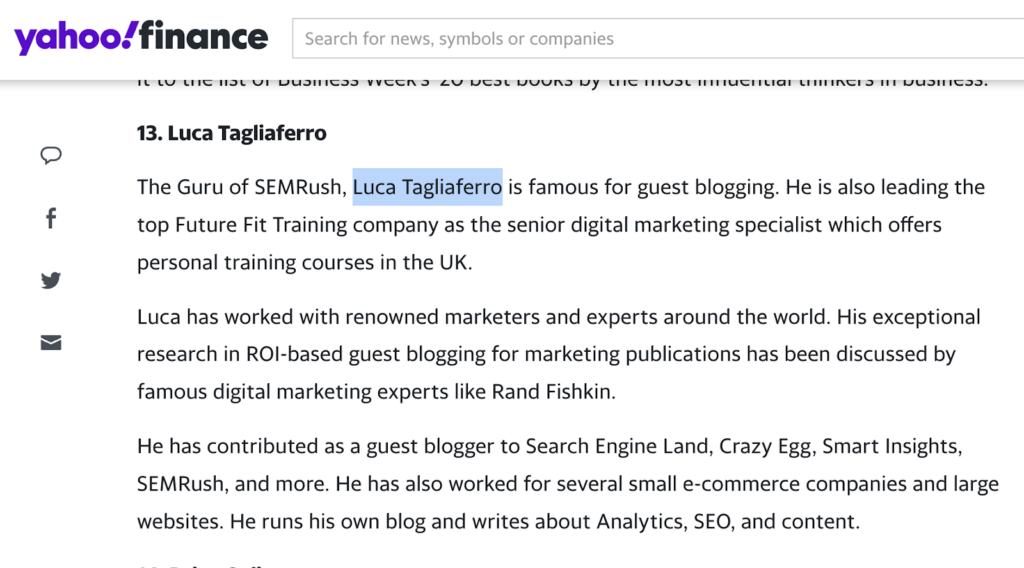
In addition, I used HARO to generate backlinks for my clients. For example, this link from Business Insider to an online pharmacy in the UK, that landed just a few days ago.

Business Insider is a major publication with 29 million visitors a month. To receive an overview of the website, you can use your SEO tools.
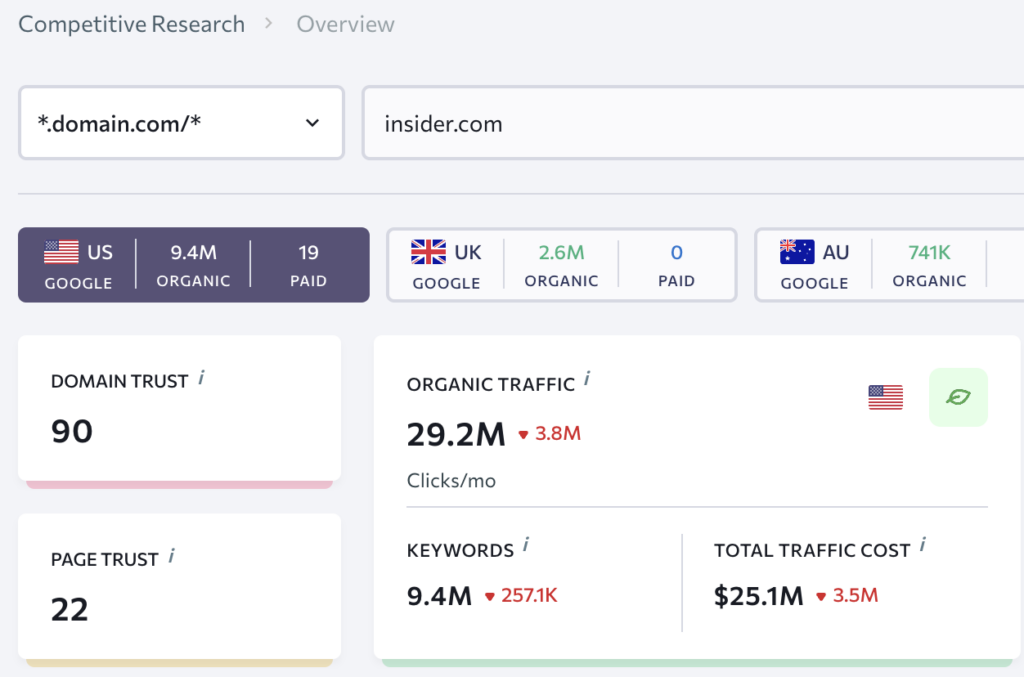
To be clear, this strategy takes a lot of work as journalists receive a lot of pitches. With that said, I don’t know any other way for generating such high-quality backlinks. Receiving links from HARO doesn’t cost you anything but your time.
How Good is HARO for SEO?
HARO is a great approach for receiving high-quality, safe, and trustworthy links, which is great for SEO. The service is a valuable alternative to expensive digital PR campaigns. In other words, the more natural relationships you develop, the more authoritative you’ll become and the more rewards you’ll gain!
How Many Links Can You Expect to Receive With HARO?
It depends on the industry and link opportunities coming to your email, which can change dramatically. In my experience, on average, I have converted 1 link placement every 15 pitches.
Should I Use the Paid HARO Account?
After you’ve tried out the service, you should seriously consider upgrading to a premium HARO account. Many extra features become accessible, giving you a competitive advantage while pitching.
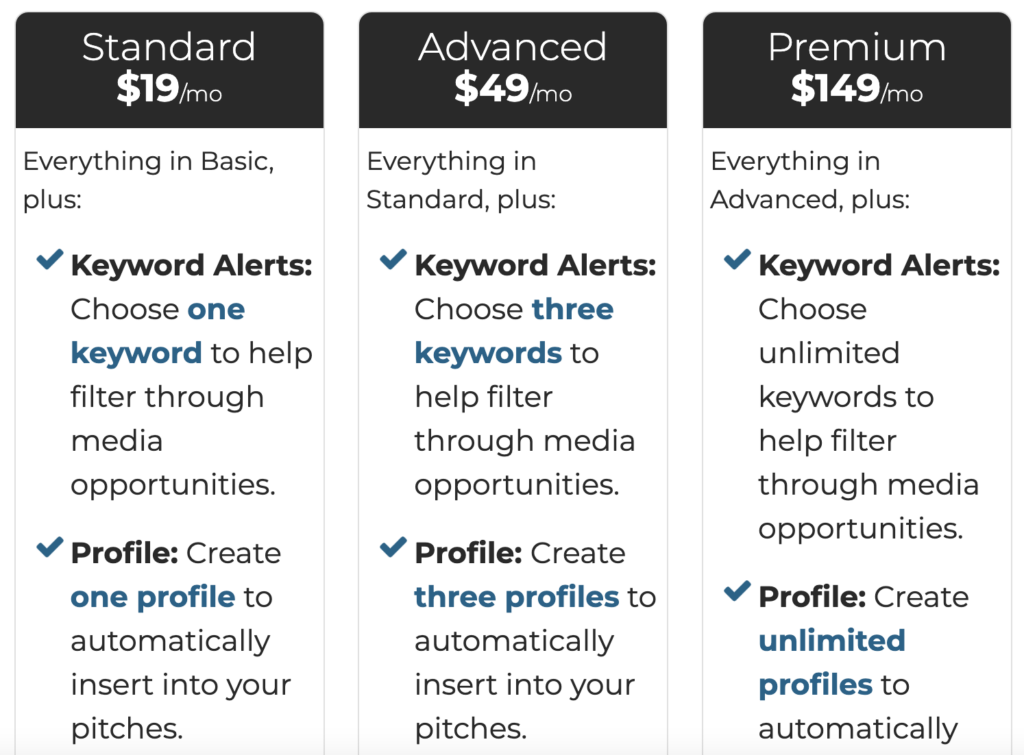
How to Use HARO: Step-by-Step Instruction
Step 1. Register and Choose Your Preferences
First, head over to www.helpareporterout.com and register as a source.

Second, choose your industry preferences.

Once you have saved your preferences, the next day, you’ll start receiving a daily digest of link opportunities. You can also change the frequency to “weekly” or “monthly”, but I would recommend that you set it to “daily” to ensure you don’t miss anything.
Don’t forget to check pitch opportunities delivered to your email address.
Step 2. Reply to Pitch Requests
It’s important to note that you don’t have to answer every question. HARO is about quality, rather than quantity. Here are my recommendations for picking the best possible opportunities.
Match the Pitch With Your Skills
It’s very tempting to pitch every one of those opportunities, but if you read the pitch request, you’ll find that they require specific qualifications or job titles.
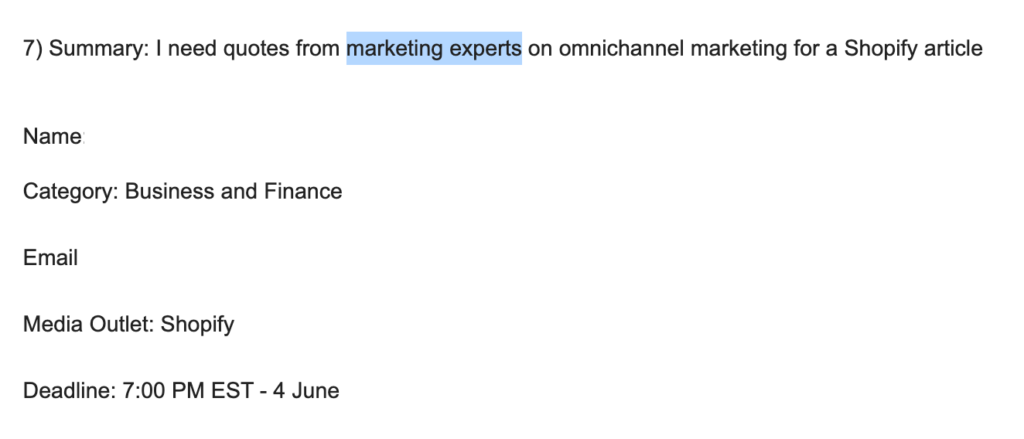
In the case shown in the above screenshot, the pitch requires a marketing expert. So, if you are web designer or CEO, your chances of securing the pitch are extremely low. Make sure to pick a query that requires your special skills.
Journalists want quotes or expert opinions from people with specific job titles, so they indicate roles such as “need a Dermatologist”, “need a pediatrician”, or “seeking a physical therapist”.

Pick Relevant Sites
Another best practice is to choose blogs that match your industry.
From an SEO perspective, linking from websites in the same industry gives Google a stronger signal compared to linking from irrelevant sites. This means focusing on sites where your potential audience is hanging out.
Of course, there are a couple of exceptions to this rule:
- When your website is new and doesn’t have much of an online presence, any link is better than none.
- When famous, authoritative news sites open up an opportunity, your relevance doesn’t matter anymore. The reason is that their authority is so high that it overrules relevancy.
It takes a bit of research to figure out which are the best sites in order to assess the most credible and relevant media outlets before preparing your pitch.
Be Quick to Respond
Your chances of success are slim if you don’t reply very quickly. Make sure you check your HARO emails as soon as you get them. Journalists will receive pitches in order of submission and earlier pitches will be seen first.
Step 3. Craft Your Pitch
The most important thing to remember is that HARO is an email-based service. So, if you want to get noticed, apply the best practices for email marketing.
Make sure you answer questions in a short, digestible way without compromising the quality of your message.
Here is what I have done to land links from Business Insider, Yahoo! Finance, and more:
- Write a short bio: Journalists require expert answers. So, the first thing you need to do is write a short bio followed by a link to your LinkedIn profile. This allows the journalist to check your credentials.
- Follow instructions given in the query: It’s important to keep the order of your answers in the same order as the questions. Ideally, journalists and bloggers will just copy-paste your answers into their articles, so make them ready to publish.
- Use a call to action: Sometimes, the writer needs to ask further questions, so it’s vital to provide a CTA with your contact information and an email address.
- Provide creatives: Along the lines of making the piece ready for publication, you can provide a link to your headshot or company logo. In HARO, the prevent anyone from downloading viruses, you’re not allowed to provide downloadable content.
This is an example of an answer that I received from a request I made on HARO:

Step 4. Complete Your Job
Once you have replied, your job isn’t complete. In my opinion, from here, you have two options:
- You can do nothing and wait for the journalist to notify you. If you have done everything correctly, you’ll receive an email.

- You can create Google alerts to be notified when your brand name or website URL is mentioned.
Is HARO a Great Service to Generate High-Quality Backlinks?
HARO is a great way to generate high-quality backlinks; however, the process can become time-consuming and competitive. With that said, it doesn’t have to be that way. Simply make sure to apply these best practices to your pitches and increase your chances of success.
Start using HARO today and watch your website’s authority and search rankings grow. And while you’re at it, why not monetize your increased traffic? Join Travelpayouts, the leading travel digital partnership platform, and turn your SEO success into revenue.
Join the Travelpayouts Partnership Platform
Access exclusive tools and the best travel partner programs, including flights, hotels, car rental, insurance, tours and activities, all in one place.
Join Today

